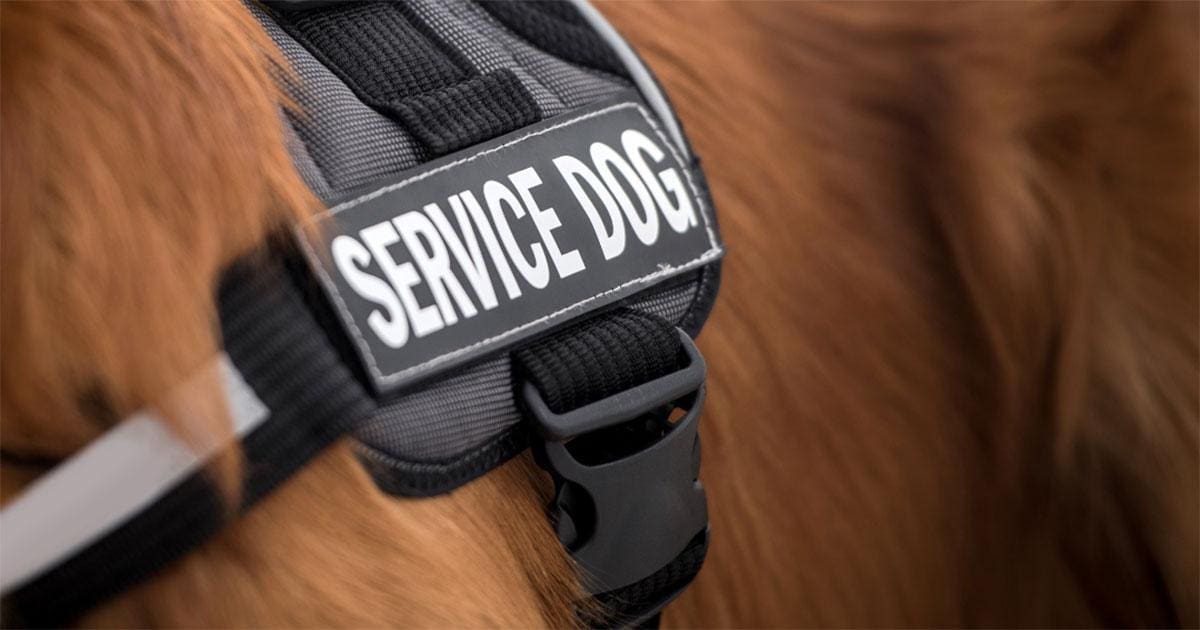Have you ever been out shopping and noticed that a dog accompanies someone in the store? It’s pretty common in the Pacific Northwest to see, as we love our dogs here, and many places are dog-friendly. However, look closer, and you might notice that the dog is wearing a special harness with the words “Service Dog” clearly visible.
Under the Americans with Disability Act, a service animal is defined as “a dog that has been individually trained to do work or perform tasks for an individual with a disability. The task(s) performed by the dog must be directly related to the person’s disability.” Let’s take a look at a few of the conditions that a service dog can assist.
Visually Impaired
A common job for service dogs is providing assistance for visually impaired individuals. These dogs are sometimes called “seeing-eye dogs.” In 1929, the first U.S. school for guide dogs opened. It was called The Seeing Eye, Inc. For many years this was the only school in the U.S. for training assistance dogs. Visual Assistance dogs wear a harness that will always have some white on it as white denotes a visual service dog or visually impaired person.
Limited Mobility / Wheelchair User
These dogs serve their owners by opening or closing doors, retrieving objects, and other helpful tasks. Sometimes, these service dogs will simply wear a harness that is used to help pull the wheelchair of their handler.
Hearing Impaired
Some dogs are trained to alert their hearing-impaired owners to sounds such as the doorbell, alarms, sirens, phones, and vehicles. They are often identified with a bright orange vest as bright orange as the color associated with hearing assistance dogs.
Severe Allergies
An allergy service dogs’ job is to alert their owner/handler to life-threatening allergens such as nuts or shellfish. These service dogs will carry their emergency medications in the pockets of their vests, which read: “In case of Emergency, check pockets.”
Autism
Autism Assistance dogs provide a calming effect on the child or adult they serve. If individuals on the Autism Spectrum become anxious, their service dog can be a calming presence for them and provide some tactile stimulation that further calms the individual. These dogs don’t always wear gear unless their handlers are non-verbal, in which case they will wear a vest carrying emergency protocol.
Seizures
Seizure response dogs assist their owner’s seizures by retrieving medication or seeking help. These dogs are trained in these tasks, but they aren’t trained to predict seizures. The dog learns to respond to seizures over time spent with its owner.
Diabetes
Dogs can be trained to alert their owner about sugar fluctuations, which can be deadly. They can be trained to dial 9-1-1 on a special K-9 alert phone if their handler is unresponsive. These dogs will typically wear a vest with the needed emergency protocols and are the first contact for an emergency responder.
Post Traumatic Stress
Post Traumatic Stress Disorder is common for military personnel returning from difficult assignments. PTSD can also be experienced by victims of violence or other traumas. PTSD dogs are trained to provide a calming presence for their owners.
Other Medical Conditions
These dogs are trained to alert their handlers to dangerous physical changes such as blood pressure or other issues.
Since service dogs are protected under law, they should be allowed to accompany their owners. Remember, though, just because you see a cute dog doesn’t mean they are o.k. to pet. If you see them, they are working, so just admire the good job they are doing for their owners.




